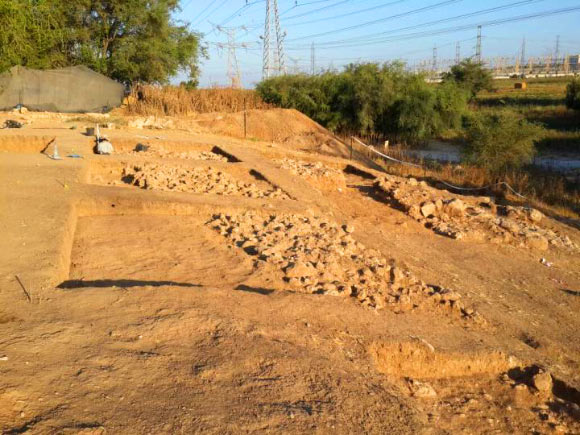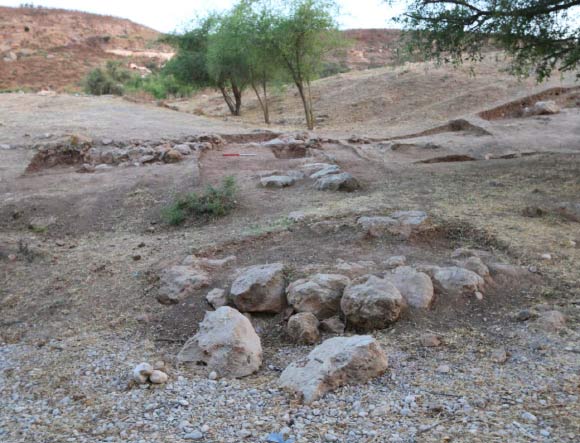A team of archaeologists directed by Prof Aren Maeir of Bar-Ilan University has discovered a fortification wall and an entrance gate of the Biblical city of Philistine Gath.

The remains of the city wall of Philistine Gath. Image credit: Prof Aren Maeir, Director, Bar-Ilan University.
Gath of the Philistines was the native place of the warrior giant Goliath and one of the five royal cities of the Philistines, the ‘Philistine Pentapolis’ (along with Ashdod, Ashkelon, Gaza & Ekron).
It was the largest city in the land during the 10th-9th century BC, about the time of the ‘United Kingdom’ of Israel and King Ahab of Israel. The inhabitants of Gath were referred to as the Gittites. The name of the city in Hebrew is ‘gat,’ which means winepress.
In addition, Gath is portrayed as a city of the legendary Anakim, a race of ‘giants,’ remnants of the early Canaanite population of the land.
Excavations at the site of Gath, located in the Judean Foothills, about halfway between Jerusalem and Ashkelon in central Israel, have produced many fascinating finds, and this year was no exception.
The newly-discovered entrance gate is among the largest ever found in the country and is evidence of the status and influence of the city of Gath during the 10th-9th century BC.
“The city gate is referred to in the Bible in the story of David’s escape from King Saul to Achish, King of Gath,” Prof Maeir said.

The Iron Age fortifications of the lower city of Philistine Gath. Image credit: Prof Aren Maeir, Director, Bar-Ilan University.
In addition to the gate, an impressive fortification wall was discovered, as well as various building in its vicinity, such as a temple and an iron production facility.
“These features, and the city itself, were destroyed by Hazael King of Aram Damascus, who besieged and destroyed the site at around 830 BC,” Prof Maeir said.
“Among the most significant findings to date at the site: Philistine Temples dating to the 11th through 9th century BC, evidence of an earthquake in the 8th century BC possibly connected to the earthquake mentioned in the Book of Amos I:1, the earliest decipherable Philistine inscription ever to be discovered, which contains two names similar to the name Goliath; a large assortment of objects of various types linked to Philistine culture; remains relating to the earliest siege system in the world, constructed by Hazael, King of Aram Damascus around 830 BC, along with extensive evidence of the subsequent capture and destruction of the city by Hazael, as mentioned in Second Kings 12:18; evidence of the first Philistine settlement in Canaan (around 1200 BC); different levels of the earlier Canaanite city of Gath; and remains of the Crusader castle Blanche Garde at which Richard the Lion-Hearted is known to have been.”







